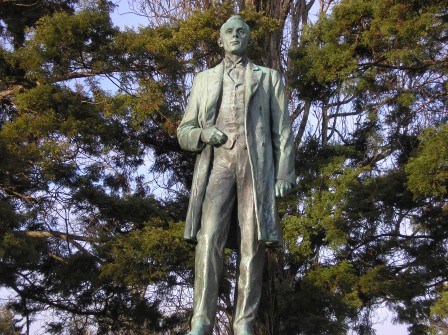By Morf Morford
Tacoma Daily Index
If you go to other cities, or even look at the promotional videos or slick brochures you might find in hotel lobbies or at conferences, you will probably be struck by how alike cities either are or are portrayed to be; every city has its artisan coffee shops and breweries, its ever-present Edison lights, farmers markets and river walks.
The sheer sameness – and the apparent eagerness to conform to some sort of leisure hipster urban template – makes me completely crazy.
If I go to another city, at least by choice, I am looking for what is distinct about that city. What is it that sets that city apart from its neighbors? What does this, or any, city offer that no other city can?
I generally like California, but what makes me numb and disoriented (I tend to feel continually lost most of the time when I am there) is the constant blur of bland municipalities with their look-alike strip malls, big-box stores and ever-present sprawling housing developments – in other words, their absolute lack of any defining characteristics.
This is true on a large scale as well as small scale.
My daughter had a friend who had grown up in the southern California neighborhood featured in the opening scenes of the movie “ET”.
These were identical homes on endless cul-de-sacs across the horizon. These houses were essentially the same design – just variations on a theme.
As a kid, he would visit his friend’s homes and everything was in the same place; the kid’s rooms, the kitchen, the bathrooms.
When he came up to Tacoma to visit, my daughter did what any friend would do – she took him to the homes of her friends in Tacoma.
The young man was completely disoriented – no one’s bathrooms, kitchens or anything were in the same places.
Some places were cramped, some had views (of mountains, waterways or woods) some were old, some were new, some were remodeled older spaces, some were open lofts with no clearly defined rooms at all.
Some were vintage 1940s (or earlier) Craftsman, some were Victorian, some were “mid-century modern” and some were urban apartments – some, like those around Wright Park, built around 1910, others literally a century newer.
One set of friends had a deliberate philosophy of living in places not designed to be residential – warehouses, industrial sites, abandoned churches, pre-war storage units – anything except a standard housing unit.
I had never thought of it before, but even our mix of housing (era, design and size in particular) is as variegated and unpredictable as our landscape and weather.
Other cities – especially those in the mid-West might mock our ability to drive in the snow – but driving in dry snow on a flat area is completely different from driving in our usual wet snow in hilly – if not steep – terrain. (1*)


Tacoma with its views (in almost every direction), its hills and (especially on the East Side or North End, its gulches, dead-ends, steep hills and meandering streets seems deliberately designed to defy – or at least frustrate – visitors and urban planners.
I had a student a few years ago who wrote a compare contrast essay where he explored the similarities and differences between the East Side and the North End – both were on hills (facing different directions) – and both featured views of the mountain and “the ocean.”
Many cities have great views – but how many have them in essentially every direction?
It is not unusual to be able to catch the sun rising over Mount Rainier and see it set over the Olympics – in the same day.
And where else could you see a moon-rise or even a lunar eclipse over our mountain?
And how many cities have a port strategically placed, ideal for export to, or import from Asia? Access to Alaska, California and South America?
Framed by the Cascades to the east, the Olympics to the west and Puget Sound views popping up in all kinds of places from Swan Creek Park to 6th Avenue, Tacoma has a setting literally like no other place.
But setting does not make a city. What people have done, for good or for ill, is what makes a city.
Some have a vision for the future, others have a vision for the city, but either way, decisions accumulate and a city is built from the choices, compromises and promises (kept or broken) by more hands than could ever be counted or recognized.
We, like every city, have our “founding fathers” even though we all know that it takes many hands – and voices – and visions – most of them unrecognized – to literally – and figuratively – build a city.


Tacoma has a reputation for being “gritty.” Like many Tacoma residents, I have mixed feelings about that term. “Gritty” implies dirt, sawdust and almost any kind of industrial residue – especially that crumbly debris that comes from human labor and sweat (and inherent danger) from the timber, stone and smelting that made this city.
Yes, Tacoma literally emerged from the toil, timber and sweat of those early years, but is that who we were once, or is it who we will always be?
But more directly, in the 21st Century marketplace, where every city seems determined to sell itself to the lowest bidder, what is it that sets Tacoma and Pierce County apart from those generic urban scenes?
Yes, we have our brand-name as well as independent coffee shops, breweries and artisan bakeries, but they don’t make us who we are.
Tacoma is a place, unlike established major or historic cities, where almost anyone can feel convinced that they too can leave their imprint on a city still taking shape.
How many other cities could say that?
(1*) You can always find these mid-West,”expert” drivers. They are the ones on the side of the road or stuck in a snow bank. We might not know how to drive in the snow, but they have difficulty on our hills – even in good weather.








